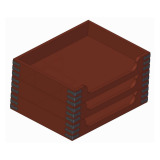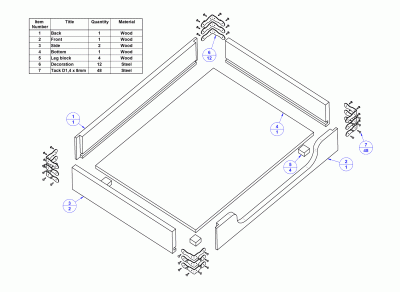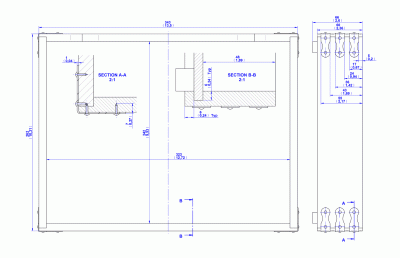We present you a Wooden stacking desk trays plan, which you can easily make on your own. Stacking desk trays from our plan contains the three levels, but if you wish, you can stack even more trays.
The construction is very simple, so you can choose the depth of trays, as well as their dimensions in accordance with format of the paper you use.
When working with documents in the office there is always a risk to mislay some important document among other papers that lay around. Important documents need to be put separately where they will always be at hand. Also, when working in the office, there are always few types of the documents that are being used frequently (like contracts, rule books, trade lists, catalogs…), while other documents are just being processed and stored or sent according to the procedure. A good office practice ordains not to mix these two types of documents, so that the documents used repeatedly will always be at hand and to avoid being misplaced. They should always be kept separately and sorted, so you could know where they are and quickly find it when you need some of them. If you want all the documentation to be at your hand but also to have neat office desk, excellent solution are the stacking desk trays.

343mm (13.5'') x 262mm (10.31'') x 66mm (2.6'')
Wooden stacking desk trays are an essential office accessories on every tidy office desk.They help to organize the desk and thus indirectly influence on the speed and accuracy of work, because they reduce time spent on searching for documents and minimize the risk of losing some of the documents.
Besides offices, wooden stacking desk trays can also be used in workshops, storage and other working places where various papers are passing through. The role of stacking desk trays is to get the papers grouped by purpose in each of the trays and to free the table surface.


During the manufacture of stacking desk trays by our plan it is considered for the parts to be joined together with glue. We used the rabbet woodworking joints, and the bottom part is joined with dado woodworking joints. There are three decorative metal parts on each corner – they give a stylish look and make difference from plastic stacking desk trays, which can be bought in stores today. Depending on how you attach them, it can also serve to strengthen the corner joints. You can change the shape of Decoration parts (Parts 3) but we recommend using the nails of same color as the metal parts. If you want to avoid the nails, you can simply glue the Decoration parts.
Each corner of the bottom part of tray has a small Leg block. The leg blocks serve to prevent horizontal movement of the stacked trays. You can glue an adhesive felt on them, so you would not damage the surface of the office table with trays. For making stacking desk trays you can use various types of wood such as Maple, Cherry, Oak, Walnut and many others. If you want natural look of wood, choose some nice figured hardwood and use clear / transparent finish. Otherwise, you can paint the wood and adjust its color to the decor of the office. This stacking desk trays should be nicely finished, either with wax, or shellac, or stain, according to the kind of wood used and the finish on the furniture with which it is to be used.
Cut all pieces according to the 2D drawings from our stacking desk trays plan. Before assembly, give all parts a thorough final sanding. Dry fit the parts. Trim as necessary and glue up the parts, keeping everything square. Assemble the trays. Before final finish be sure to round off all sharp corners and edges, and then give all surfaces one more sanding.
On the front part of each tray you can write the purpose of each tray, using some of the techniques, such as marquetry, chip carving, etc…